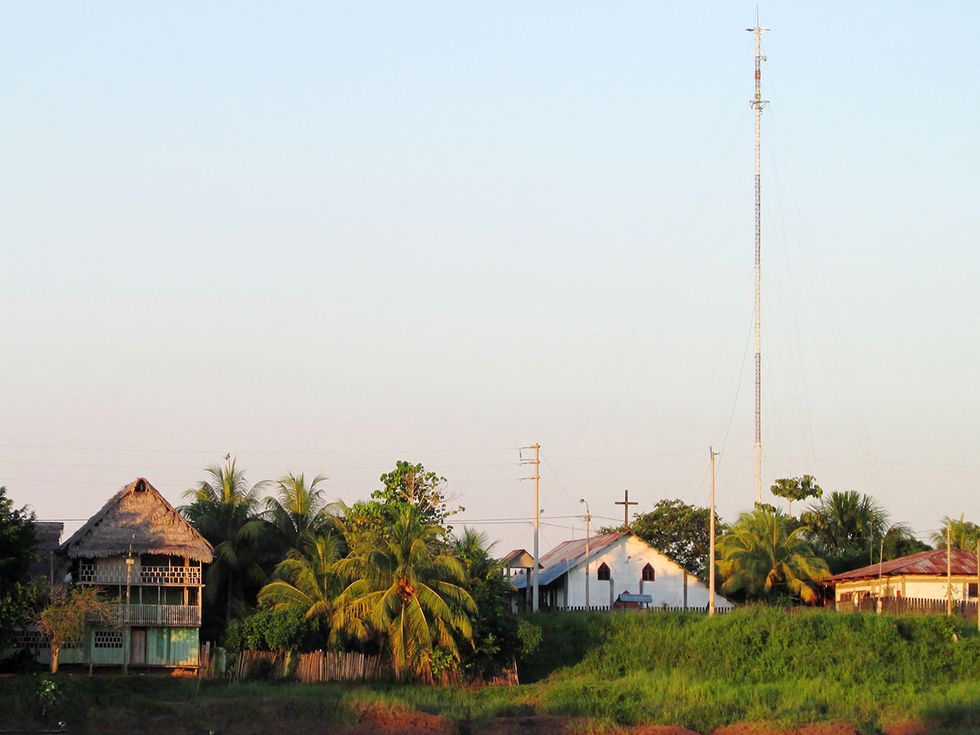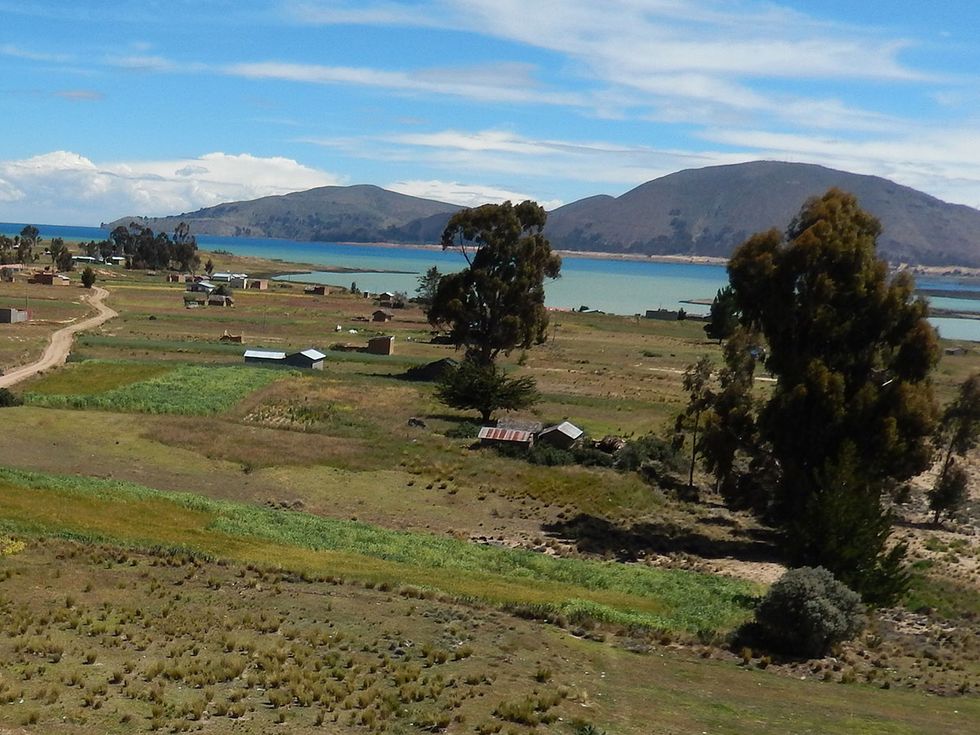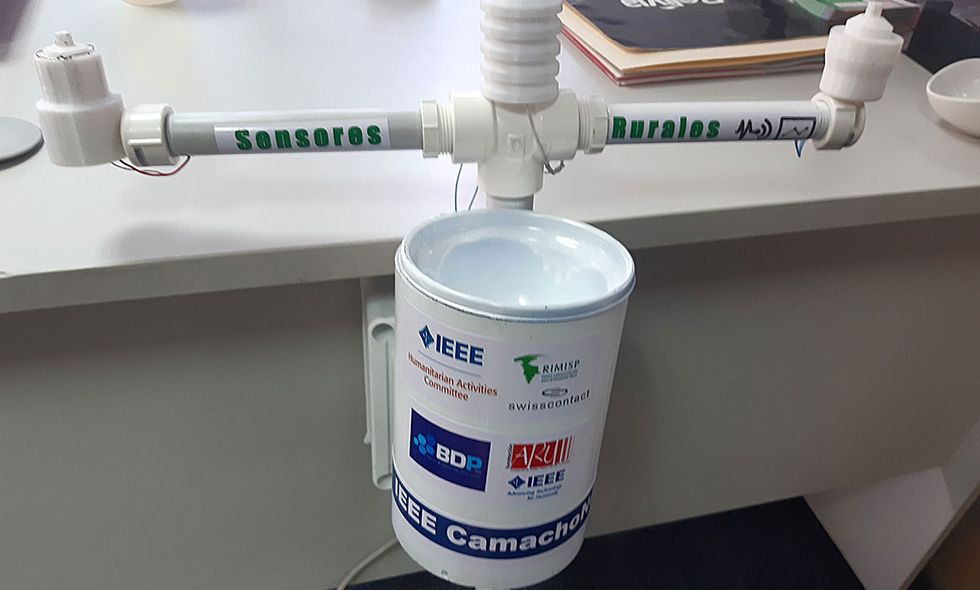More than half the world's population cannot access the Internet. There are a variety of reasons including cost, lack of infrastructure, and computer illiteracy. People without access generally live in poor, rural areas where the government struggles to provide for even basic needs.
The main contributing factor, though, is that there's no financial incentive for private telecommunications companies to build towers or other infrastructure in low-density or struggling communities.
Concerned IEEE members have taken up the cause and are volunteering their time and know-how to contribute solutions and processes that are helping address the issue. One is IEEE Member Martin Murillo, who has been volunteering for several years to bring connectivity to remote areas of Bolivia and Peru.
Murillo is the lead manager for CamachoNet, a Bolivian project sponsored by the IEEE Humanitarian Activities Committee. The project entails connecting 10 mountain villages in the Eliodoro Camacho Province through a communications network. Murillo oversees about 130 volunteers including IEEE members and student members from the IEEE Bolivia Section.
CamachoNet received a US $50,000 grant from the IEEE humanitarian activities committee, which funds projects that meet one or more of the 17 U.N. Sustainability Goals. Bolivian nongovernmental organization Fundación ARU has partnered with IEEE on the project to provide social-impact studies, now required by international development projects.
“The CamachoNet initiative has all the components of an international development project," Murillo says. “The difference is that it is fueled by IEEE volunteers who want to make a difference in their country. This project is an example of how local resources and know-how can provide grassroots solutions for pressing problems that mainstream development has struggled to provide due to their disconnection with the local reality and resources and their lack of technical expertise."
Murillo is an electrical engineer and political scientist who grew up in Bolivia and earned his bachelor's, master's, and doctorate degrees from U.S. universities. He has worked as a project manager for several companies around the world, including electronics manufacturer Norbit of Trondheim, Norway, where he led the implementation of protocols for the sharing of cryptographic keys for road-to-vehicle communications. He also was a research fellow with the International Development Research Centre, in Ottawa, where he studied the impact of technology on governance.
Prior to joining the CamachoNet project, he was a member of the Center for Network and Data Science and the University of Notre Dame's Global Adaptation Initiative in Indiana. The center conducts research to help governments and communities improve society and the environment. While at Notre Dame, he taught engineering classes for the Department of Computer Science and Engineering.

PRESSING NEEDS
CamachoNet was modeled after a similar project Murillo volunteered for from 2011 to 2014, part of IEEE's Humanitarian Technology Challenge, which ended in 2013 but which gave birth to other IEEE initiatives that are addressing reliable electricity and other challenges such as the IEEE Smart Village.
The Peruvian Amazon Project, which began in 2011, used inexpensive Wi-Fi technology to connect health centers in remote parts of Peru's rainforest—which were approximately 40 kilometers from each other. The infrastructure consisted of 60-meter towers that housed radios, antennas, solar panels, and batteries, providing 24/7 connectivity. The project, completed in 2012, enabled medical technicians to conduct examinations and provide diagnoses by connecting with doctors and specialists from several villages away.
“Putting an Internet tower in remote locations is three times more expensive than putting a tower in the city, so there's no business case for telecoms to provide high-speed communication in areas with a low-density poor population—exactly the people who need it the most," Murillo says. “IEEE took it on because villagers would most likely have to wait decades for service. Indeed, experts say that the world will not reach full Internet connectivity until 2050."
PHASED APPROACH
That same year, the first phase of CamachoNet began in the Bolivian Andes. Two health centers, one health post, and one health administrative office were connected to the network. Work came to a halt after that phase was completed, because of administrative challenges in routing IEEE's funding from the United States to Bolivia. But this year the project started up again.
Since 2013, the Bolivian government has built hundreds of telecenters, which have computers with Internet access, satellite television, and a telephone line. The telecenters also are supposed to provide online education to children, but many facilities aren't operational because the communities don't have the money to pay for Internet access.
“Bolivia has made great strides in providing Internet connectivity to its rural areas," Murillo says. “But if a person cannot pay for it, it's as though the service doesn't exist. In 10 years, this lack of access will translate into a lack of opportunities, an educational gap, a socioeconomic gap, and few prospects for students to pursue a career in science, technology, engineering, or math. The repercussions are dire."

The 10 villages in CamachoNet's next phase are on the outskirts of Lake Titicaca, about a six-hour drive from La Paz, Bolivia's capital. The volunteers are leading the building of more than 10 towers. Four of the towers will be approximately 40 meters high and act as repeaters. The team plans to install point-to-point links that span 20 kilometers. Through Wi-Fi hotspots in main squares and a community kiosk, schoolchildren and the elderly will be able to conduct voice and video chats, Murillo says. They also will be able to access material from a local small data center.
“This will literally put the information and communication at the users' fingertips," Murillo says.
The villages' health centers and medical posts will be connected to a major hospital, he adds.
The government outfitted many of Camacho Province's health centers with telemedicine equipment, he says, but much of the equipment sits unused because there are no funds to purchase Internet connectivity.
“When an extreme health emergency arises, the inexperienced doctors and nurses at these centers lack the ability to consult remotely with specialists at the country's main hospitals," he says.
FIRSTHAND EXPERIENCES
As a project lead, Murillo juggles a lot of responsibilities. He meets with community leaders to identify where the needs for the network are greatest and to determine the types of services required. He coaches volunteers so the work can be carried out in parallel in different locations. And he keeps track of where money is being spent.
He also recruits volunteers—which he says is challenging.
“It requires a lot of work to explain to students and new volunteers what the project is all about," he says. They need to be taught, for example, how to explain to locals the need to establish such a network. There's also technical instruction dealing with the installation and configuration of radios, the design of long-distance links, and the tweaking of open-source code.

Most of the volunteers are versed in some of those areas, but it's still a learning process.
Murillo says CamachoNet has given him valuable insights for his political science research on how technology influences government and society. He is studying how governmental decisions are carried out through artificial intelligence, as well as the development of frameworks to assess algorithmic transparency and the application of control-system principles to certain administrative processes.
“The project is an amazing complement to my research," he says, “because it gives me firsthand experience on the needs of rural areas."
His research has been published extensively in IEEE journals and can be found in the IEEE Xplore Digital Library.
WHY IEEE?
Murillo often gets asked why IEEE is involved with humanitarian technology projects at all. Shouldn't it be focused on developing technologies? His response is that IEEE, an international organization with chapters all over the globe, has the power to change the world.
IEEE's “secret weapon is the members," he says “There's no other organization that has the knowledge and the resources to do what we can do."
And, he notes, IEEE members want to get involved with humanitarian technology projects. In 2012 and 2013, for example, students from a number of nations spent their own money to travel to Bolivia and Peru to help implement the IEEE Peruvian project.
Such experiences prepare young people for the future, in which technology will permeate all aspects of society and there will be a need for people versed in heterogeneous areas to solve real-life problems, he says.
“Moreover," he says, “IEEE members and students in Bolivia are working to improve their own country and, at the same time, they're getting training on a variety of technologies. Through the Bolivia project, we have a blueprint for how to provide data connectivity not only in other countries but also in scenarios such as recovery from natural disasters and situations where grassroots approaches could be most effective. Volunteers all over the world with the right funding could carry out the same project in a variety of circumstances."
This article appears in the March 2020 print issue as “Martin Murillo Brings Bolivian Villages the Internet."
Kathy Pretz is editor in chief for The Institute, which covers all aspects of IEEE, its members, and the technology they're involved in. She has a bachelor's degree in applied communication from Rider University, in Lawrenceville, N.J., and holds a master's degree in corporate and public communication from Monmouth University, in West Long Branch, N.J.



